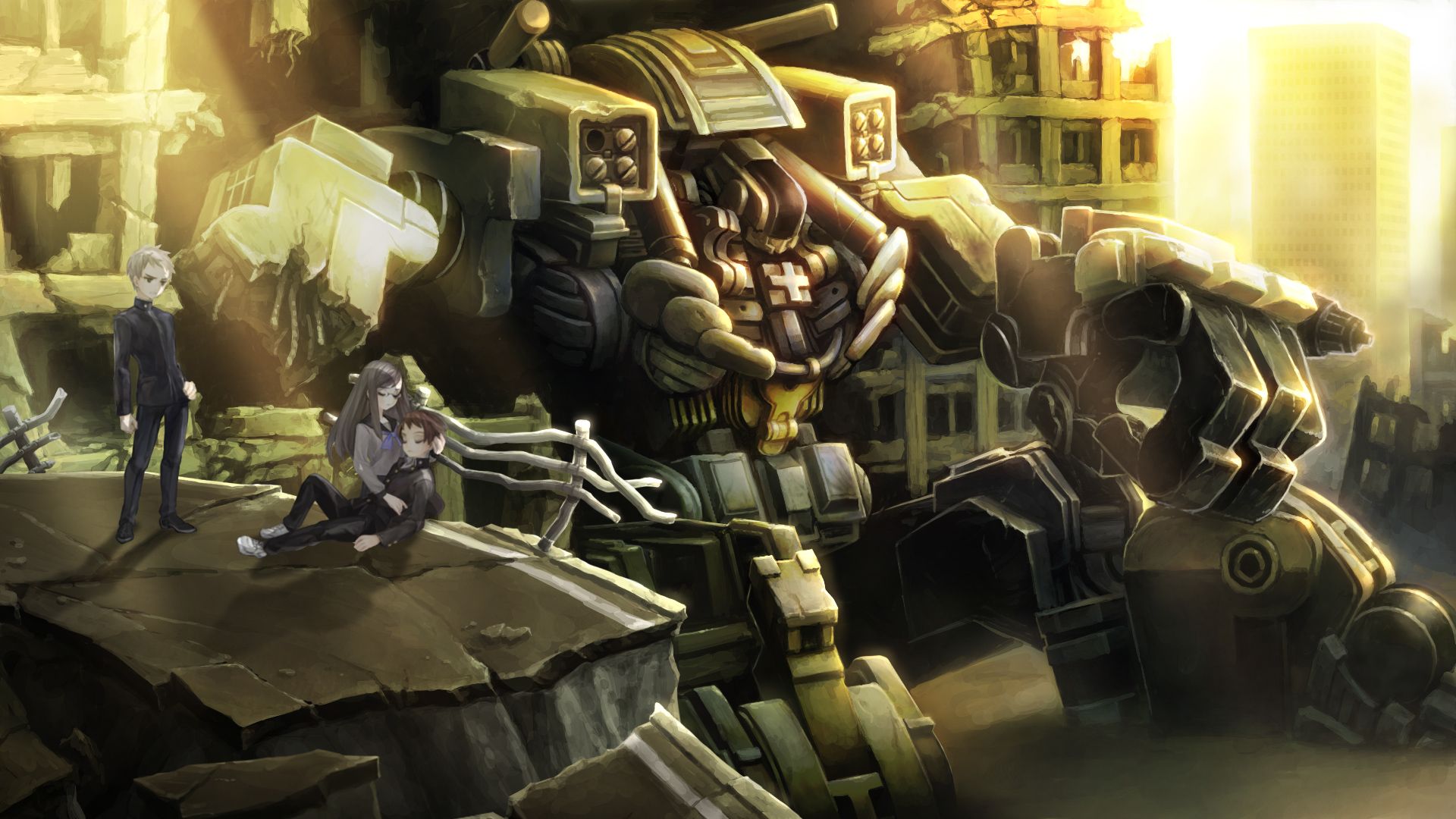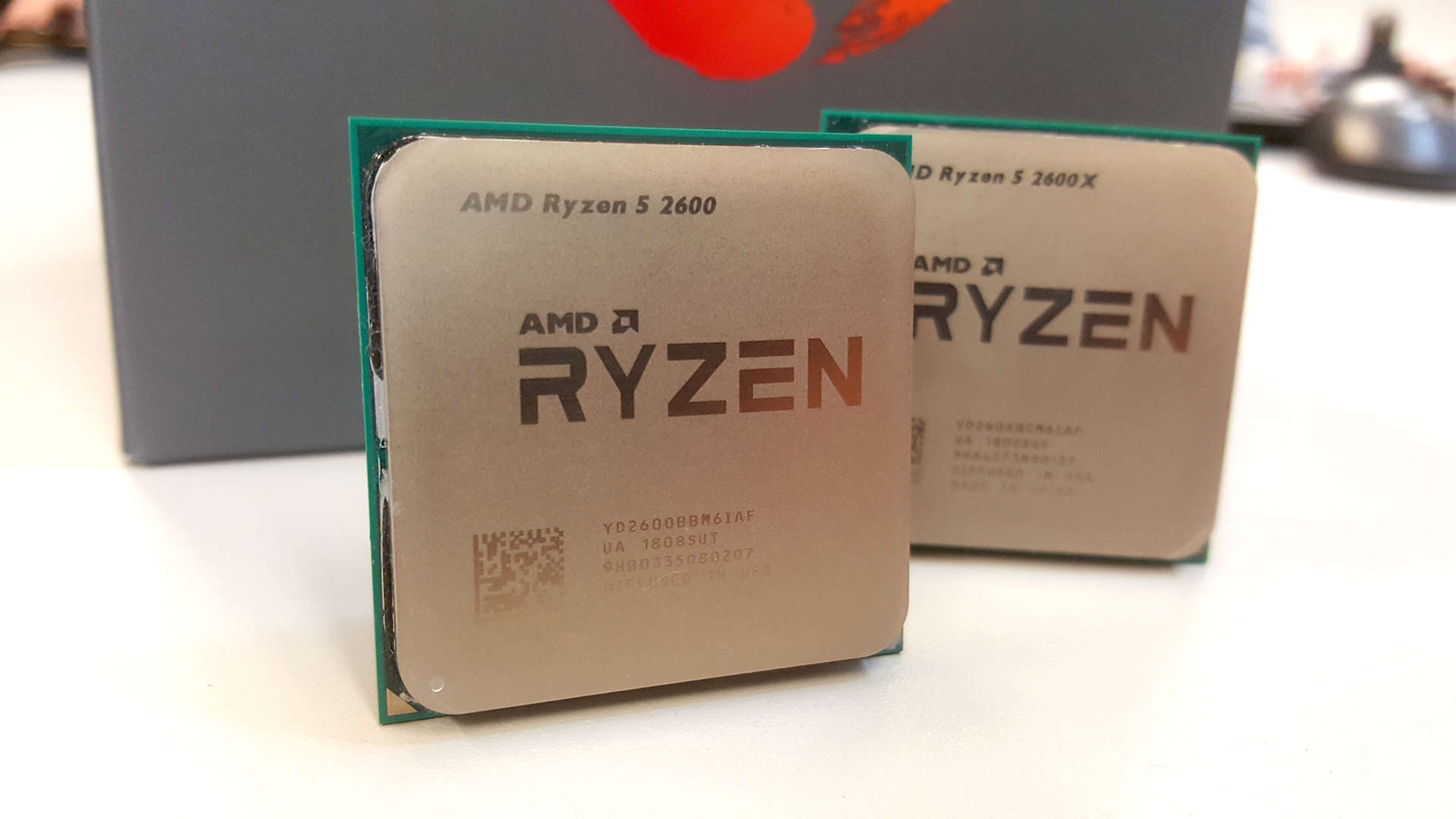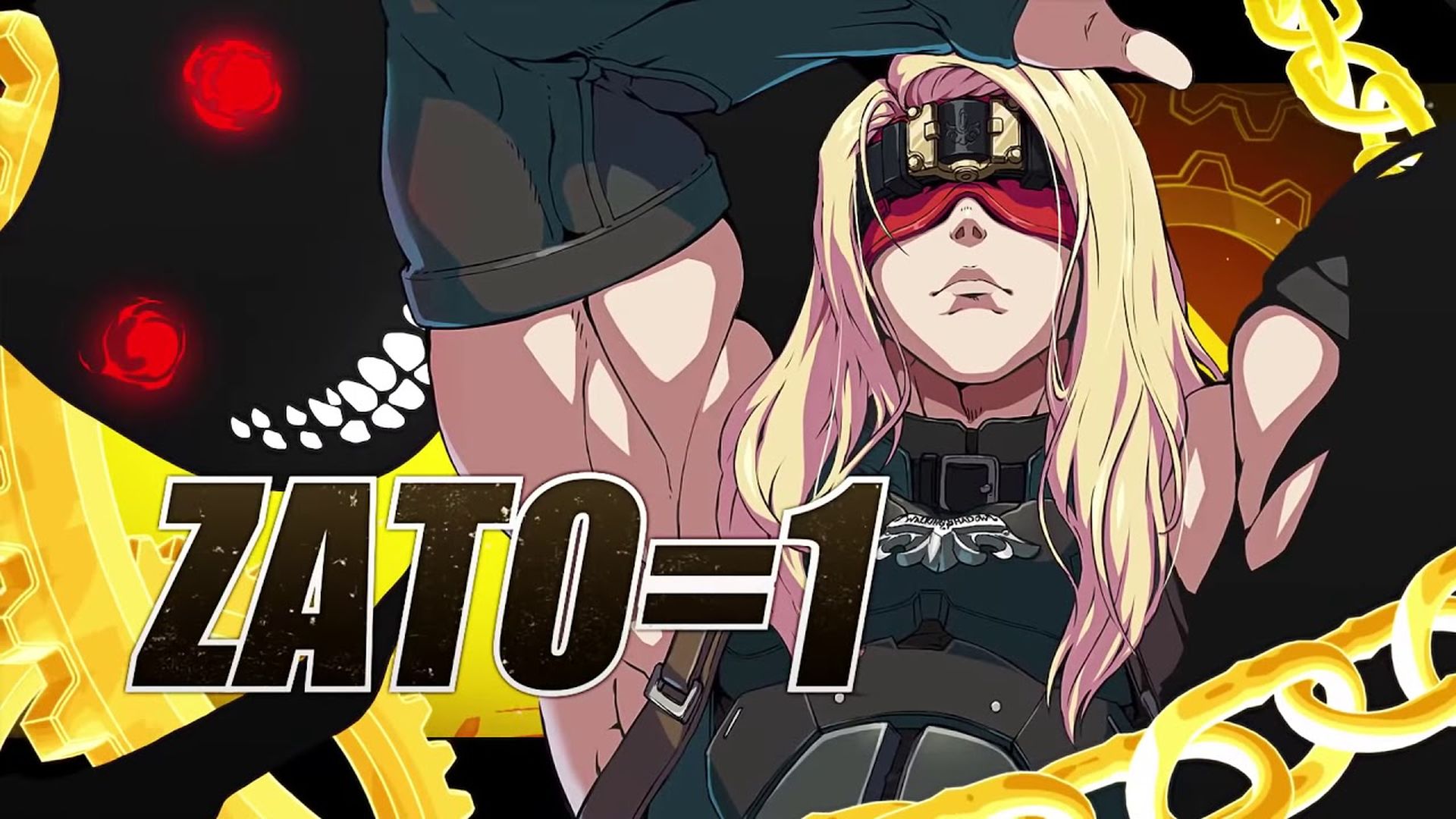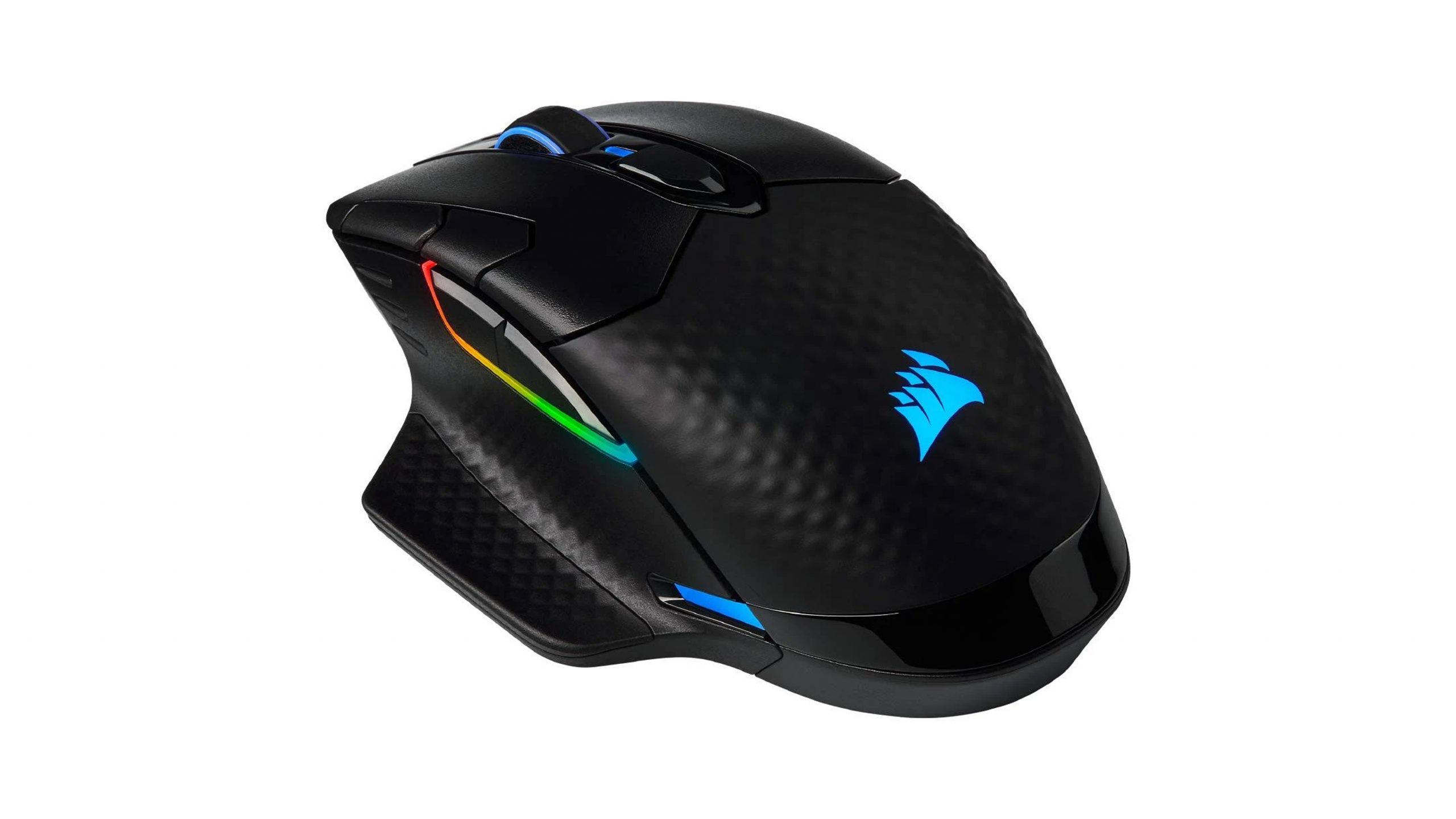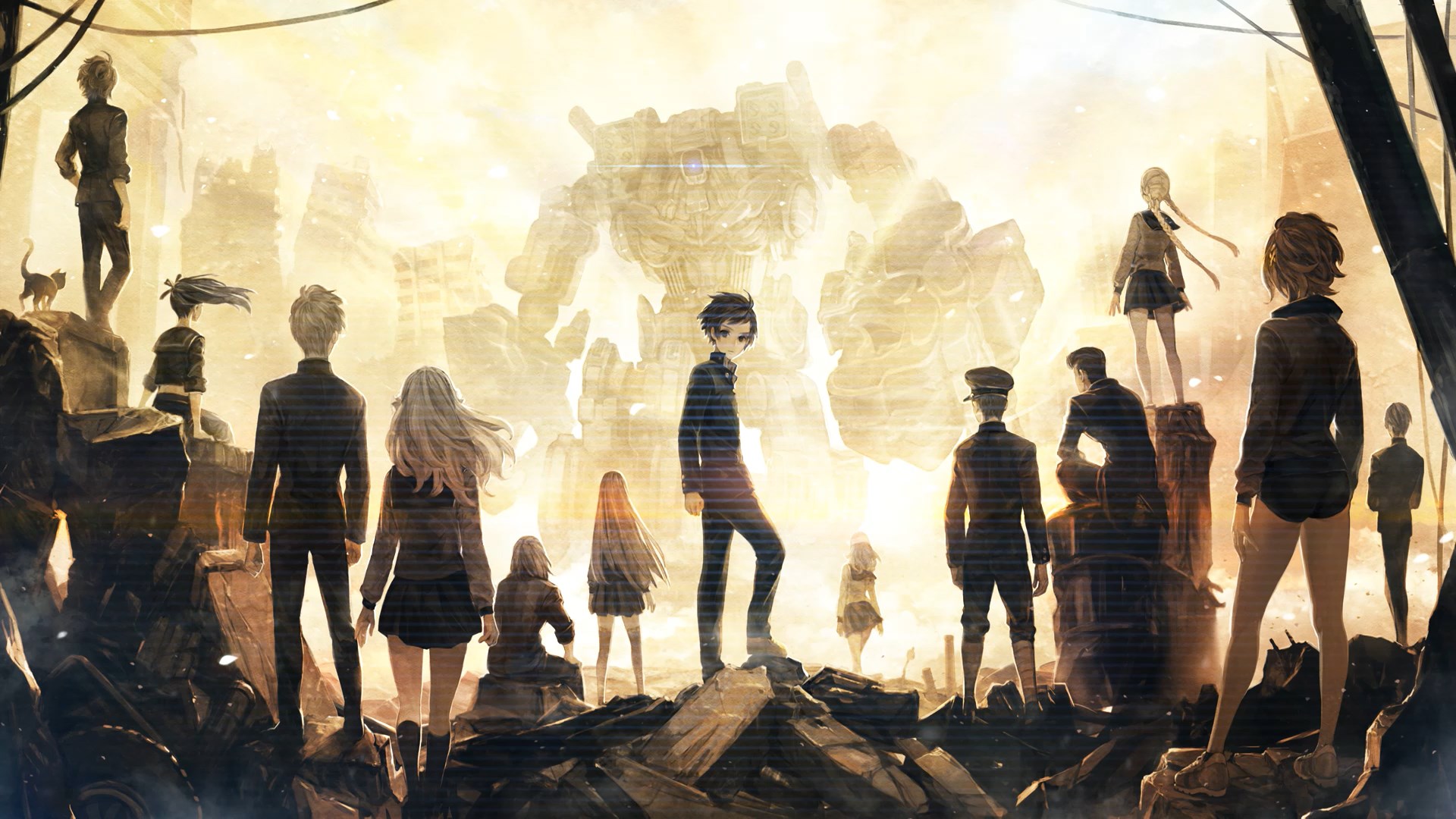
13 Sentinels: Aegis Rim is such an incredibly unusual game, it is a challenge to really talk much about it without giving away a lot of what makes it so special. Developers Vanillaware have put out their most ambitious and accomplished work to date in a delicious blend of genres and aesthetics, that shockingly remains cohesive and delivers an experience entirely unlike anything else – and one that truly must be experienced by anyone who is a fan of time travel, paranormal, invasion, slice of life, or character drama stories.
The sheer breadth of the storytelling genres I named above can seem like a smorgasbord of conflicting and contradictory storytelling styles – and to an extent, that latent tension between something as idyllic and easygoing as a slice of life high school story and a post-apocalyptic narrative about certain impending doom, is at the crux of the narrative movement of 13 Sentinels. Much like Atlus’ own Persona series, which mixes the mundane with the paranormal, 13 Sentinels balances the character driven drama of a more personal and intimate story with the broader urgency of a save-the-world style plot.
The premise is mostly simple – gigantic mecha robot weapons called Sentinels were created by humanity at some point to hold off otherworldly invaders. Following such a catastrophic invasion in the near future, a bunch of teenagers from across recent history – from 1945 to 1985 to 2025 – are pulled into battle, to try and hold off the almost certain doom that encroaches upon humanity.
It’s a simplistic premise that runs the risk of coming off as trite, but Vanillaware manage to keep it singularly arresting through multiple storytelling techniques, including an absolutely non-linear, non-sequential style of storytelling that in turn is split across multiple characters, in different time periods and eras. Following these vignettes spread across time and space, and trying to piece them together to see how all of these seemingly entirely disparate elements come together to form a continuous narrative adds a layer of challenge and interactivity to the story that it would have lacked had it stuck with a conventional, linear approach to storytelling.
"The latent tension between something as idyllic and easygoing as a slice of life high school story and a post-apocalyptic narrative about certain impending doom, is at the crux of the narrative movement of 13 Sentinels. Much like Atlus’ own Persona series, which mixes the mundane with the paranormal, 13 Sentinels balances the character driven drama of a more personal and intimate story with the broader urgency of a save-the-world style plot."
To be fair, this approach can be incredibly confusing, especially initially – particularly since it takes the concept of in media res to its limit, and literally drops you in the middle of a story with multiple characters, terms, and events thrown at you without explanation, explanations that are then further withheld given the fractured way the story is pieced. But there is a central mystery to it that can hook you right away – and once that happens, Aegis Rim does not let go.
One of the many things that does help 13 Sentinel with its esoteric approach to storytelling is its large cast of extremely likable characters, who are instantly relatable and also written extraordinarily well. Even when you find yourself thrown into the deep end of the pool without any bearings, and waves upon waves beating down on you and disorienting you further, the characters provide an instant anchor. They’re very well written (a special shout out needs to go to the localization team here, for how well they handle giving so many different characters their own unique voices, while also keeping them all empathetic), and the performances by the voice actors, across the English and Japanese tracks alike, are exemplary and crucial to selling those characters from the get go.
These characters will be your initial point of intrigue – even as the broader cacophony of the hectic narrative fades into noise, you’ll want to learn and know more about the characters, and piece together what happened to them, and when. Vanillaware knew what they were doing here, and the deliberate nature of their storytelling choice can be appreciated as you realize how the curtain is slowly, steadily, pulled back on the larger plot and these characters’ place within it, gradually as you follow this eclectic cast through time and space.
You’ll notice all of this review has so far stuck only to the story and storytelling side of things, and that’s because of how central that narrative is to the experience. Unlike any of Vanillaware’s previous titles, 13 Sentinels is a visual novel with point and click adventure elements for much of its runtime. The segments where you are following these characters in their lives leading up to the cataclysmic battles they will ultimately fight are all presented in this VN format. Vanillaware, however, keep things mechanically interesting even here – the thought bubble concept they introduce here, which essentially involves keywords you can pick up and then contemplate by yourself or discuss with other characters – with the context of where, when, and with whom the discussion is happening changing what follows – adds a kind of interactivity that visual novels otherwise lack (and, again, adds a sense of non linearity to proceedings).
"One of the many things that does help 13 Sentinel with its esoteric approach to storytelling is its large cast of extremely likable characters, who are instantly relatable and also written extraordinarily well."
While the bulk of the game unfolds in those VN parts, however, the most mechanically dense parts of the package are the battles. These are the battles you are fighting in the future to hold off the invaders as you pilot your Sentinels, and they, much like everything else in the game, are a mixture of multiple styles – turn based RPGs, real time strategy, and tower defense, in this specific case. These battles are extremely interesting (and can become really challenging later on). You have multiple units, each with unique abilities, to pilot and keep track of across the map, objective points across the map, and waves upon waves of enemies to hold back.
The battles, much like the story, can feel extremely overwhelming and cacophonic at first, and it can be hard to keep track of what you’re expected to be doing. Here, at least, Vanillaware did make some concessions to players, and things are gradually doled out to you slowly and across time, with concepts being explained and new powers being made available as the battles continue to ramp up in intensity. The battle system has some very engaging quirks of its own, such as an exciting spin on the traditional SP system in the form of EP; most of your powerful attacks consume EP, and quite a fair bit of it too. You can regenerate EP either by destroying enemies, or by spending some time in defensive mode. In defensive mode, you recharge your EP, but you are also entirely immobile and unable to do anything for a fixed period of time – which means that planning out the sequence and timing of your attacks by taking the placement of enemy units across the map, as well as the position of your own units, is paramount. The last thing you want is to find yourself surrounded by extremely powerful enemy forces, with no EP, and a certain death sentence if you enter your defensive mode.
Finally, of course, there is a part of the game you spend trying to piece the story and events together in sequential order, to get the full picture. 13 Sentinels makes this really easy, thankfully, because it collects and collates all relevant information in a tidy list for you that you can peruse at any time. While this can be a breather from how hectic things can get elsewhere in the game, as mentioned, this part poses its own unique challenge to the player (in a good way), as you attempt to reconcile and piece together all the information on hand.
It really shouldn’t work, but 13 Sentinels somehow comes together. It has so many fractured and contradictory mechanics, story beats, aesthetics, genres, developments, and styles all thrown together that really, this game should have felt like the product of a very prolonged and troubled development cycle. Instead, it brings all its elements together into one extremely strong, extremely unique, and extremely cohesive package that is quite unlike anything else, and one of the strongest experiences available on the PS4.
This game was reviewed on PlayStation 4.

